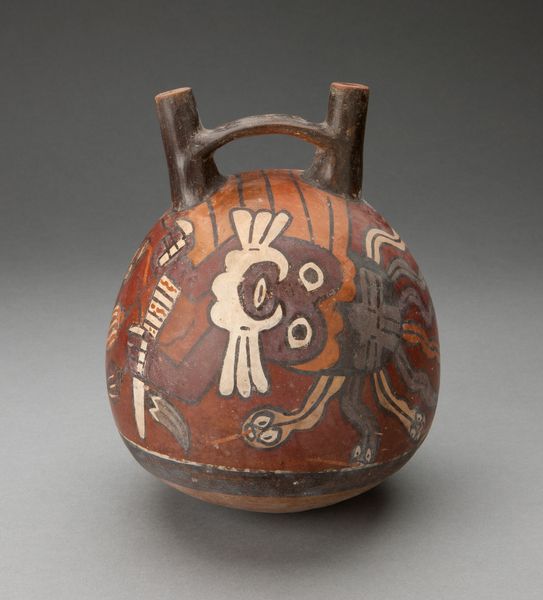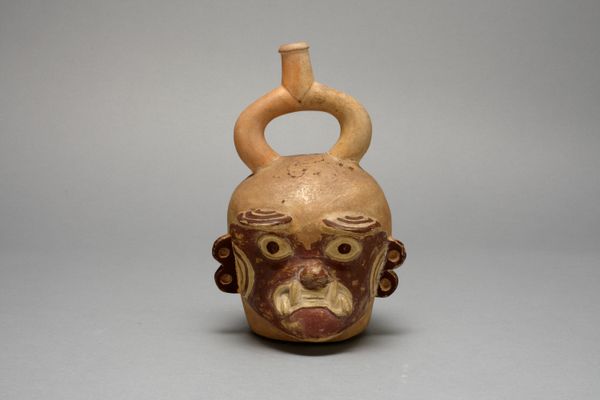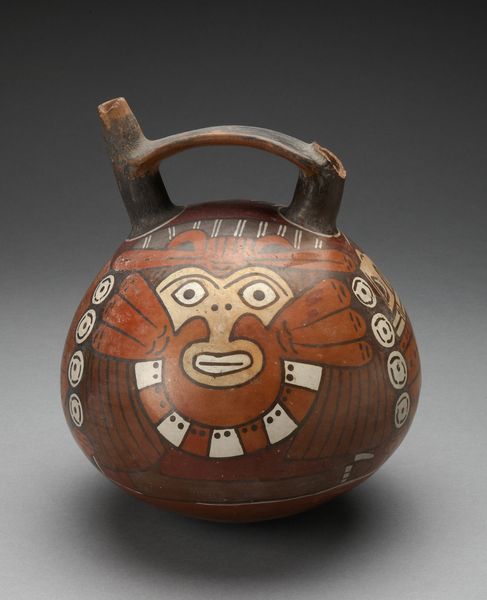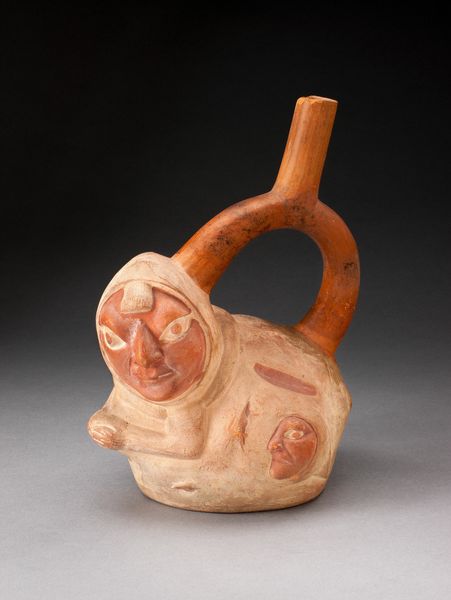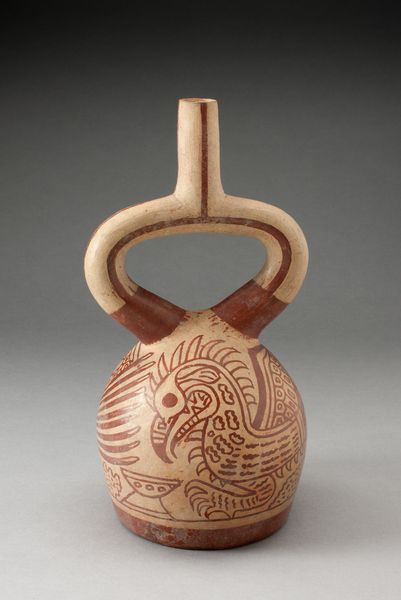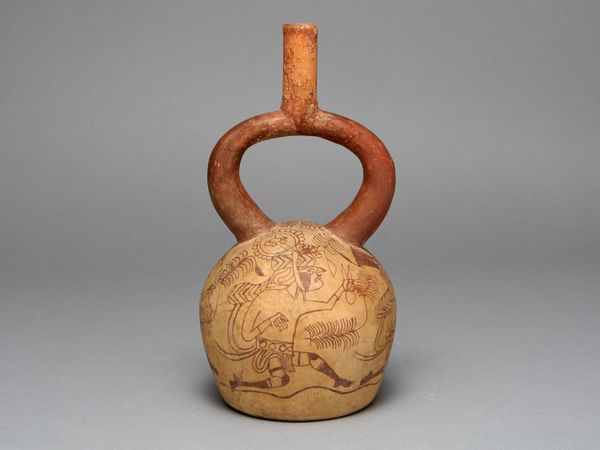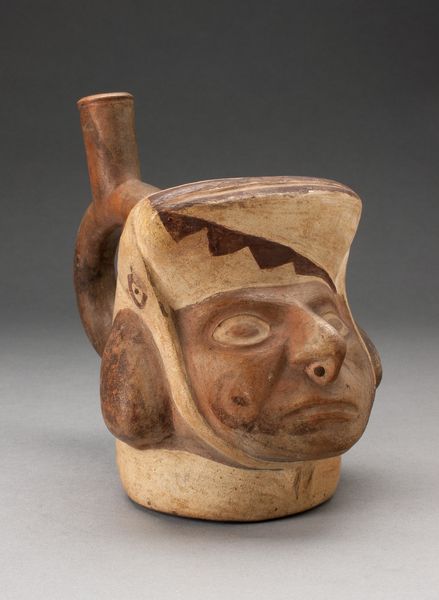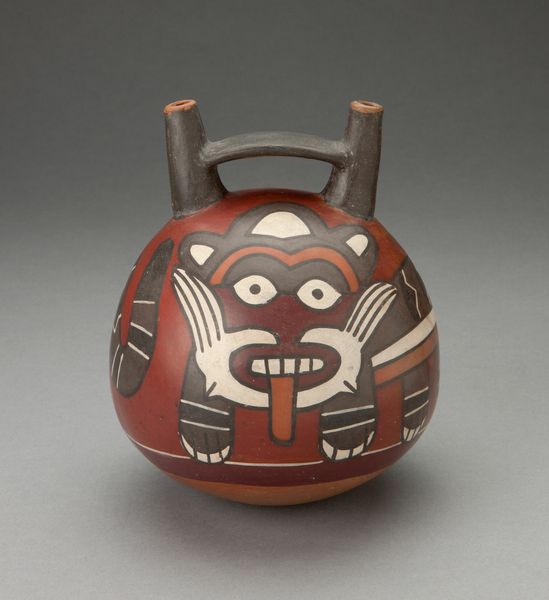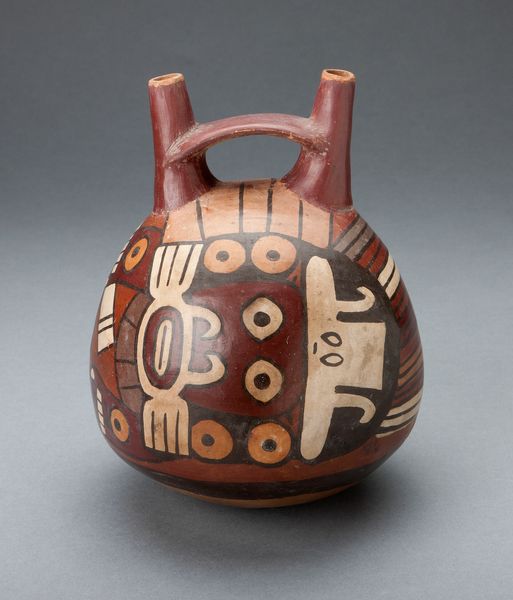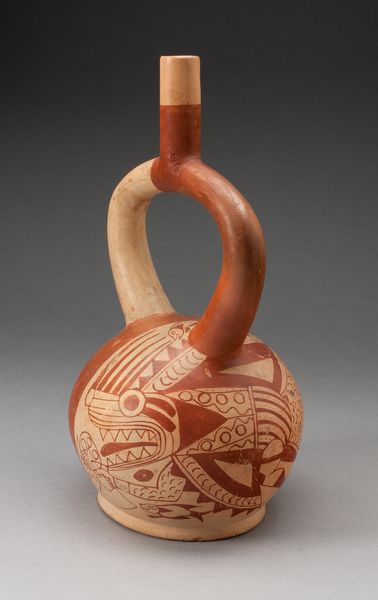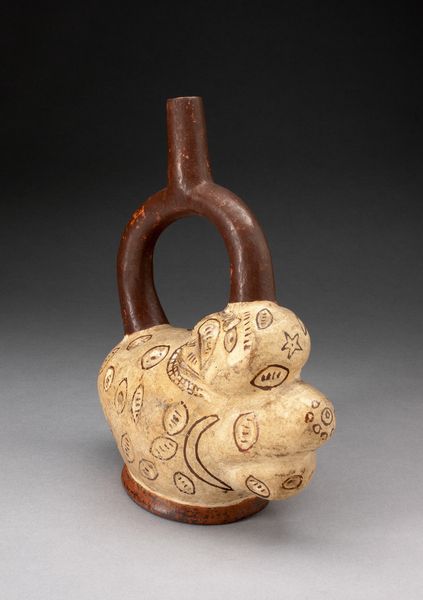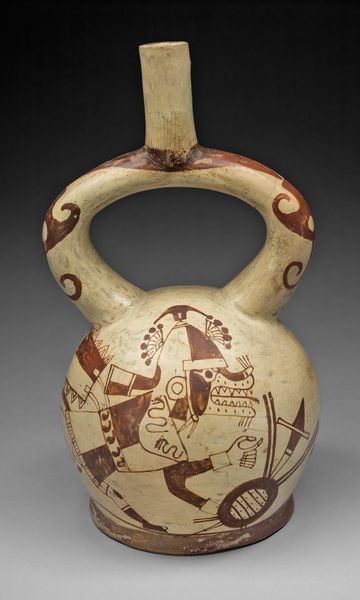
Stirrup Vessel in the Form of Multi-Headed Feline Being Possibly 250 - 500
0:00
0:00
ceramic, terracotta
#
ceramic
#
figuration
#
ceramic
#
terracotta
#
indigenous-americas
Dimensions: H. 27.3 cm (10 3/4 in.)
Copyright: Public Domain
Curator: Welcome! Let’s delve into the "Stirrup Vessel in the Form of Multi-Headed Feline Being," crafted by the Moche culture, likely between 250 and 500. This ceramic sculpture is now part of the Art Institute of Chicago's collection. Editor: Wow, what a presence! Immediately, I’m getting a “guard dog of the underworld” vibe. It’s imposing but also… almost cartoonish? Like a fierce Saturday morning animation villain. The way the multiple heads stare is a little unnerving. Curator: It’s fascinating to consider how this piece would have functioned within its original context. Given the Moche society's reverence for animals, particularly felines like jaguars, this multi-headed representation could symbolize power, protection, or perhaps a connection to the supernatural realm. These vessels weren’t mere decorations; they often played a crucial role in rituals and as offerings. Editor: Right, and the stirrup spout. What's with the bizarre handle contraption? Seems pretty awkward for pouring your tea. What’s its deal? Curator: Good point! The stirrup spout is actually quite ingenious. The Moche culture thrived in an area prone to evaporation. So that design limited surface area, thus controlling evaporation. Beyond utility, the depiction of a feline figure also brings up interesting questions. Was it to enshrine specific qualities they were ascribing to this animal to evoke? And further, how might access to those attributed characteristics have differed across societal stratifications? Editor: Thinking of that practicality reminds me of what art actually *does*. This vessel must have had a role for many. And its creation involved labor—digging clay, crafting it, adding paint... Then firing it. Curator: Precisely. Understanding its production illuminates so much regarding access to specialized skill. It speaks to societal structures, the division of labor, and the value placed on artistry. Editor: It almost feels incomplete talking about the Moche, as these cultures experienced intense colonialism which shaped them even before official encounters. A little bittersweet, this feels like one thread of a vastly larger weaving we only barely glimpse. Curator: Yes, it prompts a deep meditation on pre-Columbian history—the power dynamics and cultural erasure embedded in the narratives surrounding the Americas. Hopefully engaging art in the context of complex issues like this prompts us to keep reflecting on what is truly seen in art as well as what’s missing.
Comments
No comments
Be the first to comment and join the conversation on the ultimate creative platform.

